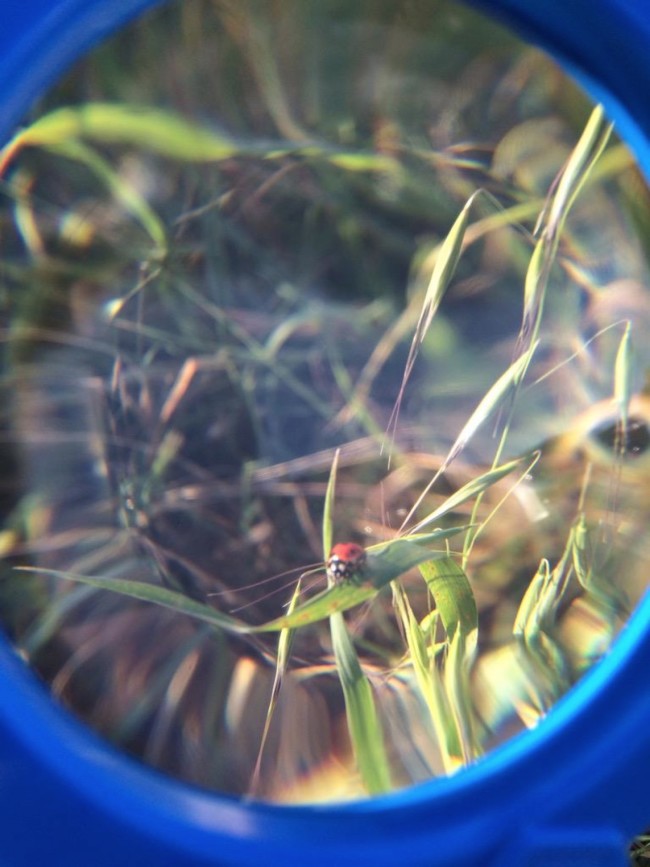The best, most engaging learning experiences don’t have to come with wires attached. I saw a beautiful reminder of that when I came across this photo tweeted by Danielle Harlow (@Dani805). Along with the photo she tweeted, “My daughter brought her magnifying glass on our walk to pre-school. Made our walk a constant investigation.”
I spend most of my day working with computers, iPads and other electronics. I get a huge kick out of trying to find new ways use them to make learning more interesting and worthwhile. But I admire the simplicity captured by Dani’s tweet. Not a single electron was involved in her daughter’s learning experience, and it was still incredibly rich.
Three things caught my eye:
- Timespan – The child was engaged and using the magnifying glass over and over again during the length of a full walk.
- Walk – There was no sitting behind a desk filling in a worksheet, interacting with an app or watching a video. Instead she was outside walking the whole time, associating her observations with sounds, smells and touches; activating different parts of her brain.
- Shared – The experience was even more meaningful because it was shared with her mother. Someone with an emotional attachment was present to answer questions and ask leading questions to help the child make even more connections.
Plus, Dani’s daughter wasn’t motivated by the lure of a high grade or three stars at the end of a level. It was wonder. A simple love of learning.
Sure, technology could have been added to the activity, but would it have made the exploration any better? Maybe a camera could have recorded each object through the magnifying glass, or a tablet used to sketch interesting finds. In this case, though, they seem like they’d get in the way. All I can think of is her fumbling with camera settings or awkwardly trying to sketch on a tablet while holding onto the magnifying glass. I prefer the simple image conjured by Dani’s tweet: that of a smiling little girl bounding down the sidewalk, amazed by everything she sees from her new perspective.
Electronic devices likes tablets and smartphones are all the rage, but it’s important to remember that technology doesn’t have to mean pieces of silicon and metal pumping electrons around to crunch and display a bunch of ones and zeros. Look up the definition of technology, and you won’t see anything about megahertz, gigabytes, or pixel dimensions. What you will read is something to the effect of the use of knowledge for practical purposes, or the machines and equipment created from that knowledge. It’s vague and open-ended. It’s also very inclusive of magnifying glasses even though they are very unelectronic.
Using a magnifying glass is using technology. The same goes for thermometers, telescopes, compasses, rulers, pinhole cameras, and rain gauges.
How have you used “analog” ed tech in the classroom or at home? Offer your ideas in the comments.

